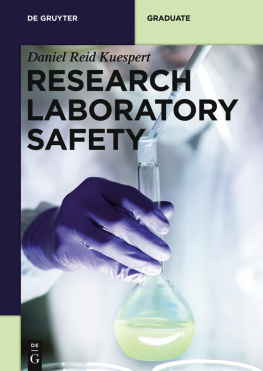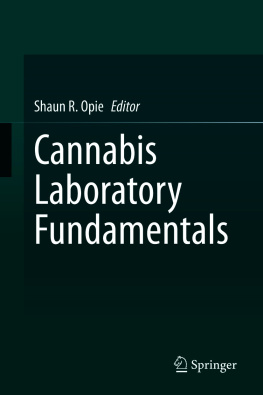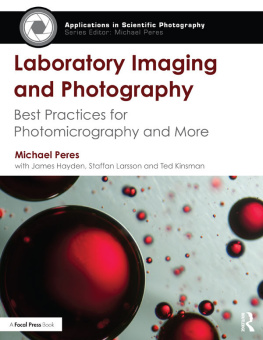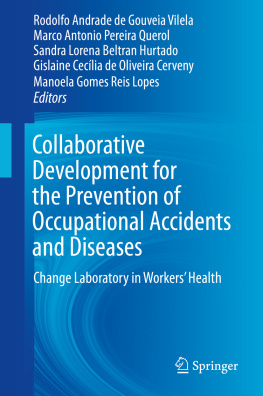Research Laboratory Safety
Guide

Daniel Reid Kuespert
Research Laboratory Safety
De Gruyter Graduate
Also of interest

Nano-Safety .
What We Need to Know to Protect Workers
Fazarro, Trybula, Tate, Hanks (Eds), 2016
ISBN 978-3-11-037375-2, e-ISBN 978-3-11-037376-9

Process Technology .
An Introduction
De Haan, 2015
ISBN 978-3-11-033671-9, e-ISBN 978-3-11-033672-6

Engineering Risk Management .
3rd Edition
Meyer, Reniers, 2016
ISBN 978-3-11-041803-3, e-ISBN 978-3-11-041804-0

Energetic Materials Encyclopedia .
Klaptke, 2018
ISBN 978-3-11-044139-0, e-ISBN 978-3-11-044292-2

Industrial Inorganic Chemistry .
Benvenuto, 2015
ISBN 978-3-11-033032-8, e-ISBN 978-3-11-033033-5
New Series at De Gruyter:

Integrated Security Sciences
Reniers, Khakzad, van Gelder (Series Eds.)
ISSN 2367-0223, e-ISSN

Author
Daniel Reid Kuespert, PhD.
Johns Hopkins University
Krieger School of Arts & Sciences
Whiting School of Engineering
103G Shaffer Hall
3400 North Charles St.
Baltimore MD 21218
ISBN 978-3-11-044439-1
e-ISBN (PDF) 978-3-11-044443-8
e-ISBN (EPUB) 978-3-11-043705-8
Library of Congress Cataloging-in-Publication Data
A CIP catalog record for this book has been applied for at the Library of Congress.
Bibliographic information published by the Deutsche Nationalbibliothek
The Deutsche Nationalbibliothek lists this publication in the Deutsche Nationalbibliografie; detailed
bibliographic data are available on the Internet at http://dnb.dnb.de.
2016 Walter de Gruyter GmbH, Berlin/Boston
Typesetting: Konvertus, Haarlem, NL
Cover image: kasto80/iStock/Thinkstock
www.degruyter.com
Preface
While research safety is a central and critically-necessary component of successful scientific and engineering research, it is often learned (if at all) by osmosis, that is, by placing the student or young professional in a laboratory environment and expecting him or her to divine appropriate methods for keeping him- or herself and his or her staff safe. If the researcher is lucky, a number of reference books such as Prudent Practices in the Laboratory are provided, along with some sketchy Standard Operating Procedures and half-hearted on-the-job training (Dont stick your fingers in here; theyll get caught.)
This book is an attempt to address that situation. It is an introduction to the range of safety hazards encountered in the laboratory and some practical methods that may be used to identify and control those hazards. The book is designed for readers with limited experience in an independent research environment (graduate students or early-stage professionals) but with at least some experience in laboratory classes or teaching laboratories. It will also be useful to non-laboratory middle-management newly assigned to supervise laboratories.
A successful researcher must learn the limits of his or her jobthat is, when information should be sought from others and when one is expected to either look it up or discover it for oneself experimentally. This book is written with that in mind. It is not intended to be a specialist reference, but extensive citations are provided to assist the researcher in finding more information. The Appendix entitled Annotated bibliography of laboratory safety references (see below) provides references to more specialized works that would be especially suitable in the researchers library. In some cases, the reader is referred to qualified specialist personnel, such as health physicists, biosafety professionals, or occupational health physicians.
The choice of material herein is quite deliberate. For example, an extensive chapter is devoted to physical hazards in the laboratory; this is partially because of the breadth of physical hazards to be found in a lab. It is also a reflection of the fact that most reference books on laboratory hazards tend to be oriented principally toward chemical, radiation, or biological safety, and they mention underlying physical hazards only in passing. Because ionizing radiation is usually subject to comprehensive regulation and control, less information has been providedin most areas handling radioisotopes and other ionizing radiation sources, a health physicist will be available to provide training and advice.
The author and publisher have made best efforts to ensure that the information in this book is as up-to-date and accurate as possible. Nevertheless, no warranty is made as to the accuracy or precision of that information, because safety knowledge can and does changesometimes quickly. The reader is urged to identify sources of information on current safety events in his or her field (an example being Chemical & Engineering News frequent features on dangerous chemical reactions) to stay current on the latest safety understanding.
One final note: this book does not address first aid and medical treatment except in passing. The reader is referred to the local chapter of the Red Cross or Red Crescent for certified first-aid training.
Acknowledgements
Acknowledgements to:
My wife Martha & daughter Elisabeth, for their support while researching and writing this book.
Dr.Mark Benvenuto, for convincing me to write this text.
My readers:
Mr. Nathaniel (Niel) Leon, mechanical design engineer, Laser Safety Advocate and staff engineer for Johns Hopkins University (JHU) Engineering Design Services.
Mr. Stanley Wadsworth, Radiation Safety Officer, Johns Hopkins University Department of Health, Safety, and Environment.
My case studies and examples:
Dean Beverly Wendland (JHU Krieger School of Arts & Sciences) and Mr. Kyle Hoban.
Dr. Tyrel McQueen (JHU Chemistry) and Mr. Zachary Kelly.
Dr. Rebekka Klausen (JHU Chemistry) and Ms. Heidi van der Wouw.
Dr. Edward J. Bouwer (JHU Geography & Environmental Engineering).
Dr. Todd Hufnagel (JHU Materials Science & Engineering) & Dr. Ravi Shivariman.
Dr. Kenneth Karlin (JHU Chemistry), Dr Savita Sharma, and Messrs. Jeffrey Liu and David Quist.
Dr. David Gracias (JHU Chemical & Biomolecular Engineering) and Dr. Shalaka Dewan.
Dr. Bernhard Fuerst (JHU Laboratory for Computational Sensing and Robotics) and Mr. Sing Chun Lee.
Dr. K.T. Ramesh (JHU Hopkins Extreme Materials Institute) and Mr. Matt Shaeffer.
















